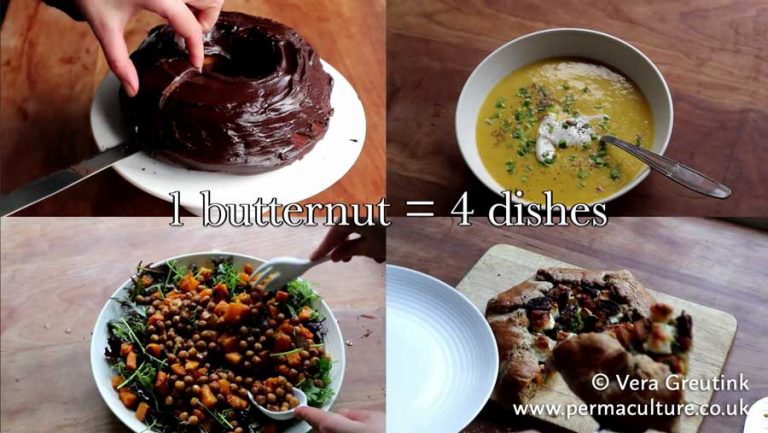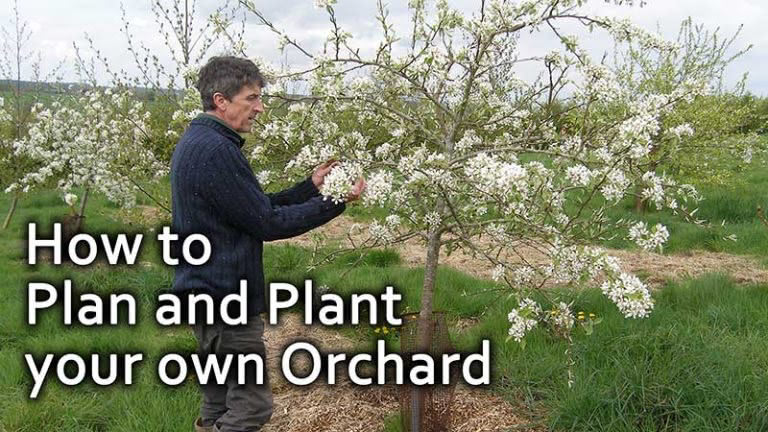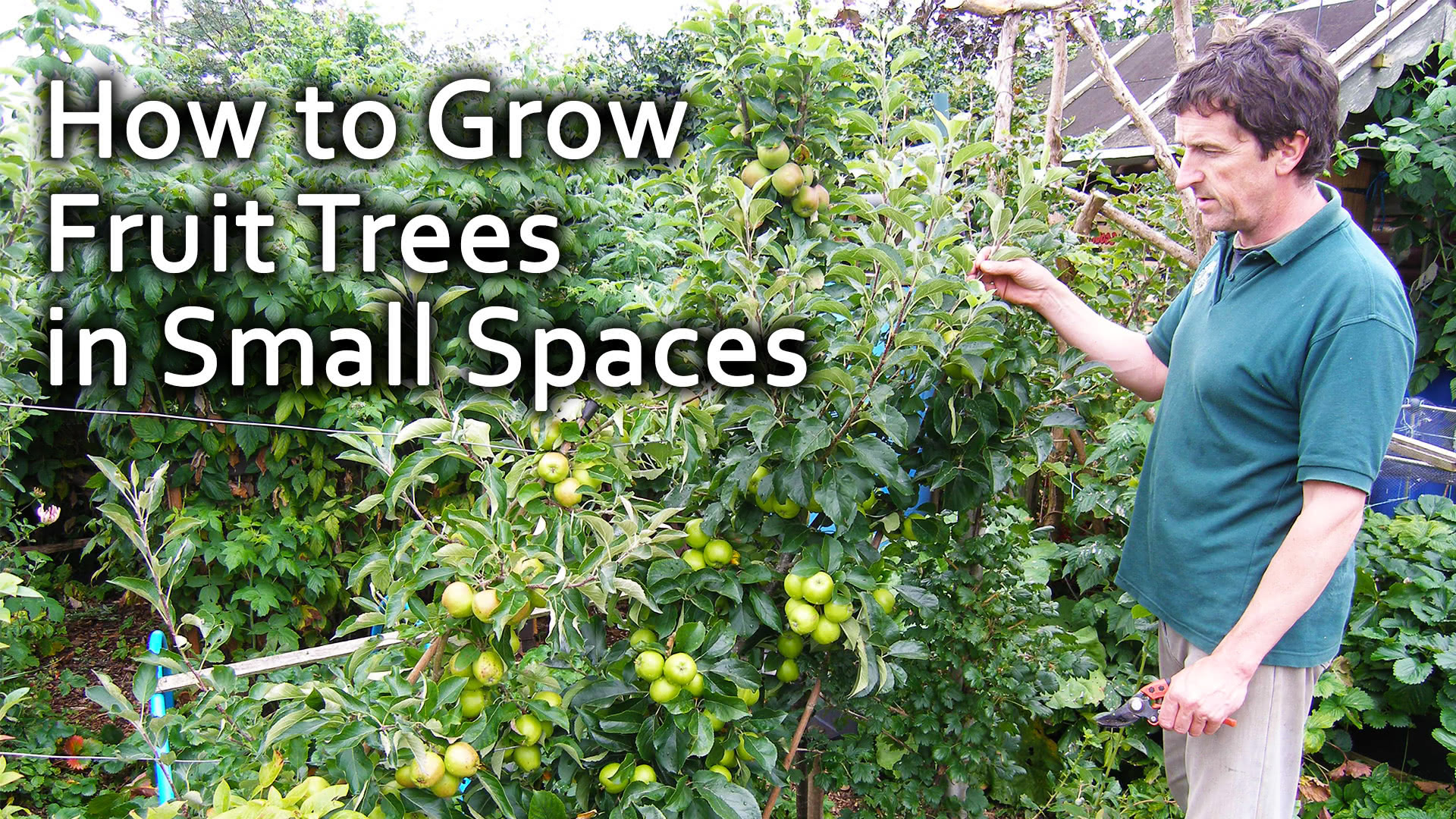Since I live in the Netherlands, the largest producer of cut flowers worldwide, growing my own organic cut flowers might seem like bringing coal to Newcastle. But because I do not like the way most of the flowers for the market are produced (forced in large-scale greenhouses and often sprayed liberally), I still prefer to grow flowers myself – organically. Besides, store-bought cut flowers can hardly compete with the easy charm and variety of flowers you can grow in your garden.
Growing organic cut flowers will not only allow you to fill your vases and make your plot prettier, but many of them are also a great source of nectar for pollinators and attract beneficial insects into your garden. Even though growing food takes precedence over flowers for me, I have grown some flowers in every garden I’ve ever had. Depending on the overall size of my gardens in the past, I have devoted up to 100m² (1000ft²) to flowers – growing a huge variety of both annual and perennial ones. But in 2013, when we had to move from a 400m² (4300ft²) plot to one about three times smaller, I shrank my cut flower patch too, to just one bed. Like most of my other raised beds, this one was 1.2 x 3m (4 x 10ft), edged with wood and filled initially with homemade compost. Annual organic cut flowers are not heavy feeders and adding too much nitrogen, especially, would result in lush leaves at the expense of flowers. I tend to treat my flowers the same way I treat my vegetables: Concentrating on improving the soil instead of feeding the plants and mulching to reduce evaporation and weed growth.
Compared to perennials, annual cut flowers will (as long as you keep picking) usually flower over a much longer period of time. For the price of one or two store-bought bouquets, you can buy enough seeds to be able to grow and pick varied bouquets from your garden for at least four months of the year. Besides, you can tailor the bouquets to your preferences; some of my very favourite organic cut flowers such as the deliciously scented sweet pea ‘Matucana’ or tricoloured annual lupin ‘Sunrise’ can’t be found in a flower shop.
For my miniature organic cut flower garden, I wanted a big variety in a limited space, so I grew just a few plants of relatively many varieties. Many of the flowers I mention are also available as mixes of colours, which can give you an even bigger variety. I only grew six plants of most of the flowers; of the two largest (cleome and cosmos) I only planted two. Most of the varieties could be sown directly, but I prefer to start them in modules. This way I can get a little jumpstart on the season and I can plant out everything at the perfect spacing. Cleome and cosmos, which are tender annuals and can only be planted out after mid-May in my climate, were pre-sown at the beginning of April. The rest of the seeds I started in March and planted out in April.
American spider flower (Cleome hassleriana)
The long protruding stamens of these tall, airy flowers remind me of cat’s whiskers. They have claws too – there are thorns on their stems, so be careful when you’re picking them! Cleome is available in white (‘Helen Campbell’), in pink (‘Pink Queen’), in purple (‘Violet Queen’ – my favourite) and anything in between. The plants can be tricky to germinate, so make sure you have fresh seed and give them a little extra heat if you can.
Cosmos (Cosmos bipinnatus)
Not just the abundantly produced flowers but also the feathery foliage are a useful addition to bouquets. There are varieties in white, pink, carmine, striped, single or double, but the sweetly scented single flowered white ‘Purity’ remains my favourite. Cosmos is very easy to germinate and grow; just do not forget to support the plants as they get quite tall.
Sweet pea (Lathyrus odoratus)
Sweet peas can handle low temperatures and can be direct-sown early in spring (or even in autumn for overwintering in a greenhouse or a cold frame). But often the seeds will be eaten by hungry mice so pre-sowing inside is therefore a safer bet. Like other legumes, sweet peas send down a long root quickly and are best sown in deep pots or in rootrainers. The delicious scent is an important part of their charm and I always choose strongly scented varieties. Two of my favourites are ‘Matucana’ (or ‘Cupani’) and ‘King’s High Scent’. ‘Matucana’ is an ancient bicoloured variety in purple and magenta and ‘King’s High Scent’ is a cream coloured modern variety with a violet picotee edge.
Pot marigold (Calendula officinalis)
The classic calendula colour is yellow-orange but many pretty varieties have been bred ranging from pale yellow to pink and deep orange. For my cut flower patch I chose the more subtle ‘Pink Surprise’ with fully double salmon-pink flowers. Calendulas are (together with sweet peas) the first of all the plants to start flowering and will attract beneficial insects into the garden too.
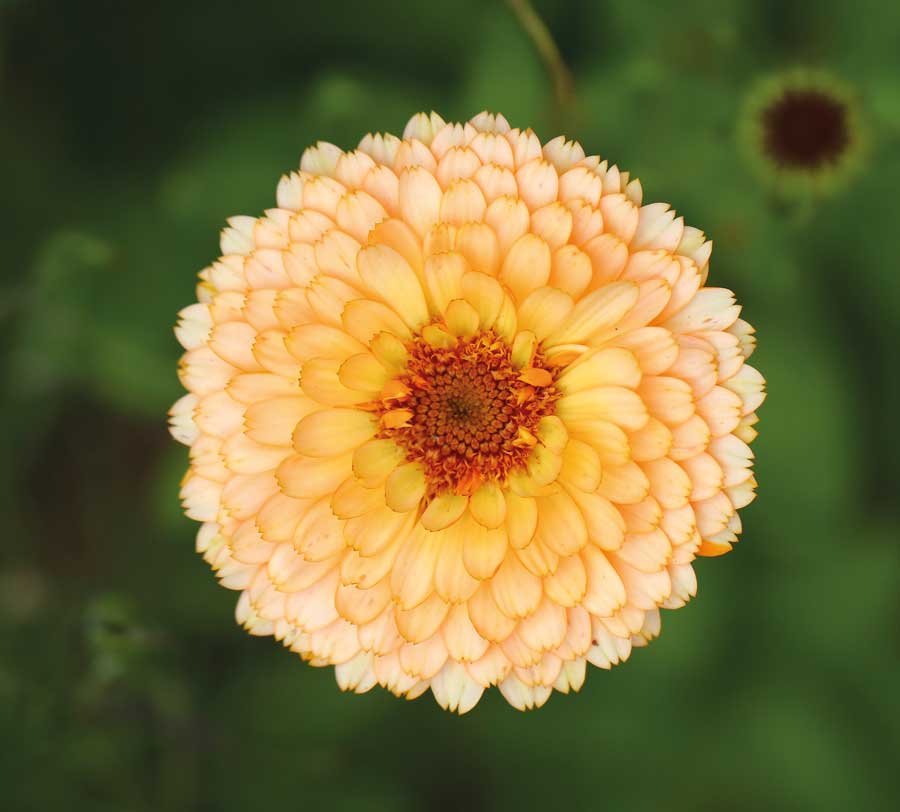
© Vera Greutink
Pincushion flower (Scabiosa atropurpurea)
The little pompoms of this flower are indeed reminiscent of pincushions. Because it is actually a (short-lived) perennial, the plants grow a bit slower than others and take longer to start flowering. They compensate for it by pumping out flowers for months, well into autumn, and those flowers attract butterflies! I sowed a mix of pink and crimson colours.
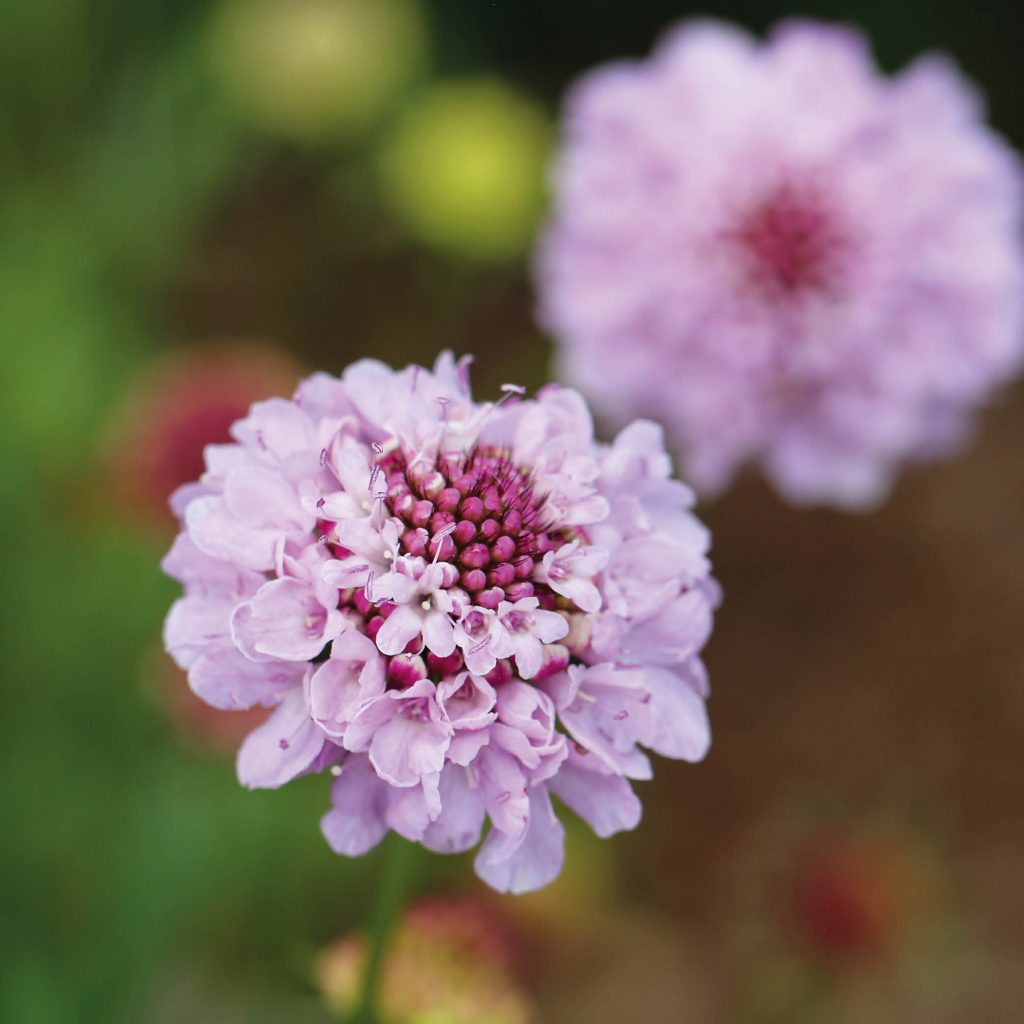
© Vera Greutink
Cornflower (Centaurea cyanus)
Cornflowers start flowering early and keep going for a long time. I do not sow them in autumn because our winters are usually too cold for them to overwinter but sometimes plants will self-seed and if they do happen to survive the winter they will start flowering even earlier. Cornflowers are quite time-consuming to pick but they add a lovely ‘cottage garden’ vibe to bouquets. Besides, the flowers are edible and popular with bees and other pollinators. Apart from the classic blue, cornflowers are also available in white, pink and even crimson-black (variety ‘Black Ball’).
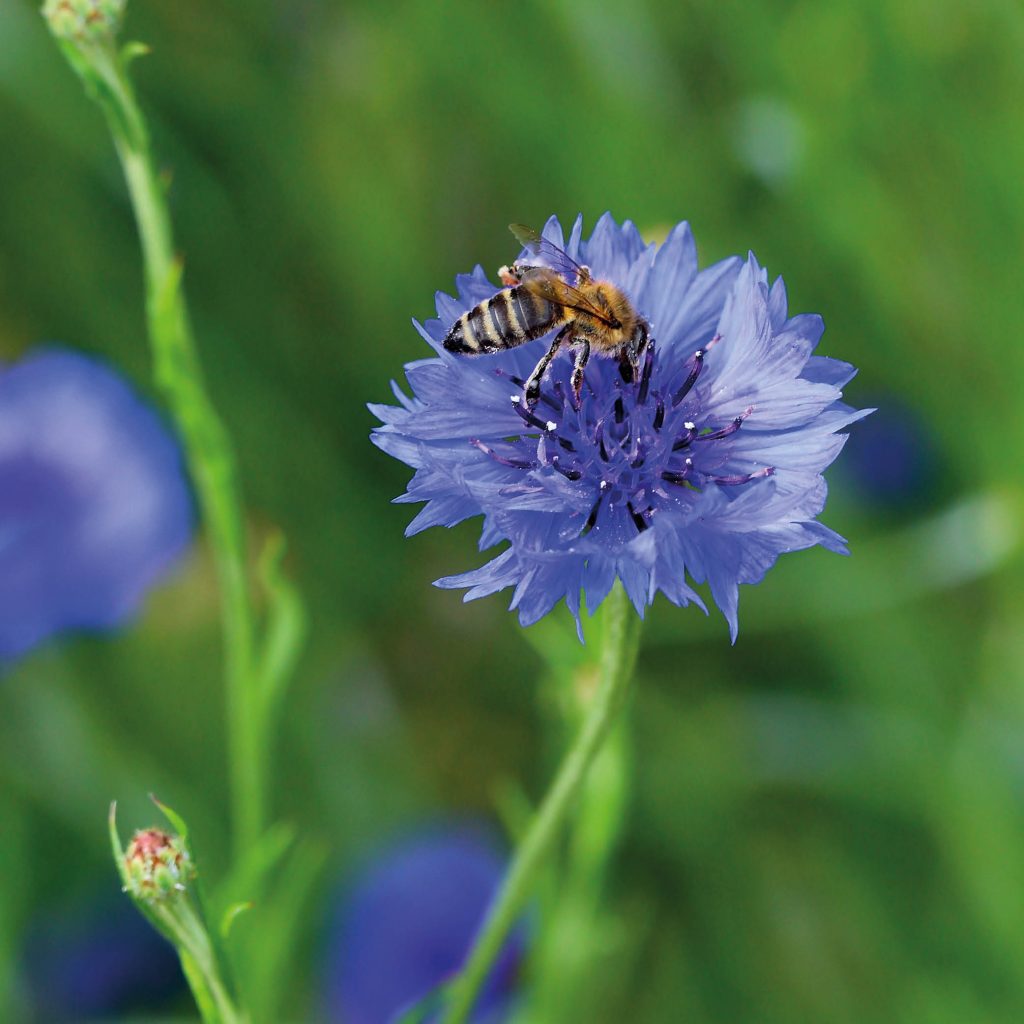
© Vera Greutink
Bupleurum rotundifolium
Not a flower that takes the central stage but an extremely useful ‘filler’ for bouquets that I always wish I’d planted more of. The stems are quite sturdy and its chartreuse colour mixes well with just about anything – from pastels to more saturated darker colours.
Bishop’s weed (Ammi visnaga)
This is an unassuming plant with dill-like leaves and a dome of closely spaced tiny green-white flowers. A bunch of these is pretty on its own but it is also another great filler for mixed bouquets. You can also grow the more delicate bishop’s flower (Ammi majus). As umbellifers, both will also attract beneficial insects such as hoverflies, whose larvae eat aphids.
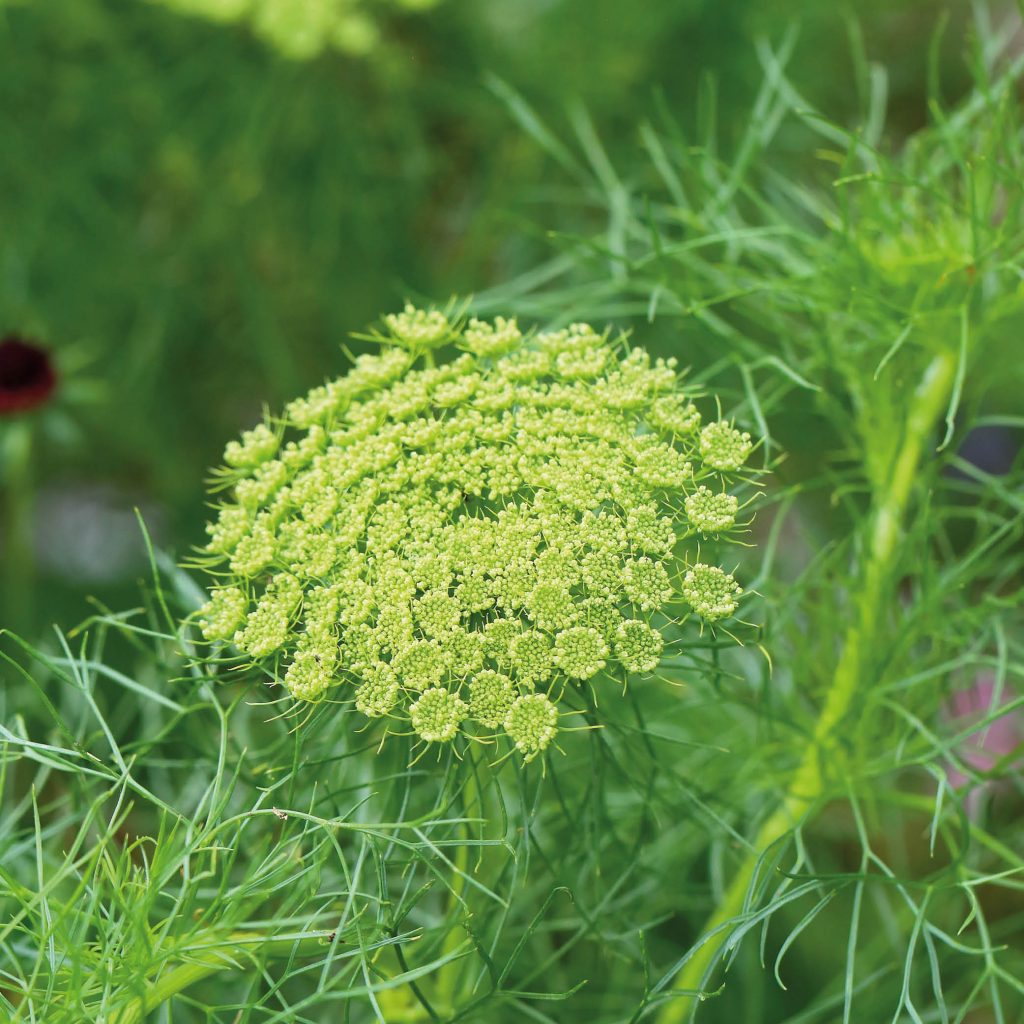
© Vera Greutink
The best moment to pick flowers is in the early morning, because they’ve had all night to absorb water. All parts of the plant are then hydrated which means the cells are turgid and the stems are strong and will not flop as easily. It is also the easiest time to spot flowers that are just opening and those are generally the best to pick and will have the longest vase life. Besides, flowers that are not fully open have not been pollinated by insects yet: as soon as that happens seeds start to form and petals tend to lose their colour. If you can’t pick in the morning, harvest your flowers in the evening after the temperature has dropped. In any case, do not pick in the middle of a hot summer day!
Use a sharp knife or flower snips for cutting and put your flowers straight into a bucket filled one-third with clean water. Always cut stems just above a side branch with a bud so that the plant will go on producing more flowers. Hygiene is important, so keep your tools, buckets and vases clean. Remove any leaves that would be submerged, or they’ll rot. Reducing the number of leaves also reduces wilting since there are fewer leaves to hydrate. Before making bouquets, leave your flowers to recover in a cool, dark spot for a few hours (or better yet: overnight).
To make your cut flowers last longer, you can add a little floral preservative to your vases, either store-bought or homemade (sugar + vinegar + bleach). Sugar will feed the flowers while the vinegar and bleach will stop bacteria from growing. But to be honest, since I can just pick a new bouquet whenever I want to, I almost never use preservatives. It does pay to refresh the water in the vase every few days though.
This is an extract from Vera Greutink’s Edible Paradise: How to grow herbs, flowers and vegetables in any space. You can learn more about her favourite cut flowers and much more in the book, available here: https://shop.permaculture.co.uk/products/edible-paradise
More from Vera: A garden in a tub
Vera Greutink is a permaculture gardener, teacher and designer based in the Netherlands. She’s been gardening for over 30 years during which she has created many beautiful and productive gardens

